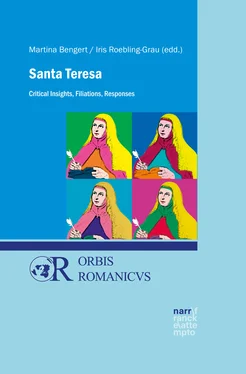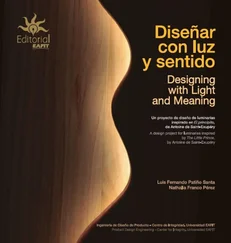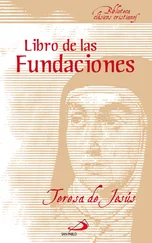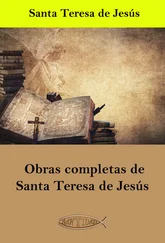
Martina Bengert / Iris Roebling-Grau
Santa Teresa
Critical Insights, Filiations, Responses
Narr Francke Attempto Verlag Tübingen
[bad img format]
© 2019 • Narr Francke Attempto Verlag GmbH + Co. KG
Dischingerweg 5 • D-72070 Tübingen
www.narr.de• info@narr.de
Das Werk einschließlich aller seiner Teile ist urheberrechtlich geschützt. Jede Verwertung außerhalb der engen Grenzen des Urheberrechtsgesetzes ist ohne Zustimmung des Verlages unzulässig und strafbar. Das gilt insbesondere für Vervielfältigungen, Übersetzungen, Mikroverfilmungen und die Einspeicherung und Verarbeitung in elektronischen Systemen.
ISBN 978-3-8233-8246-1 (Print)
ISBN 978-3-8233-0179-0 (ePub)
Among the saints of the Catholic Church, few are considered to be exemplary writers and role models for a successful life, revolutionary within the institution of the Catholic Church, as well as preservers of an intimate and imperturbable devoutness all at once. People as different as the Spanish military dictator Francisco Franco (1892-1975) and the Jewish-Catholic scholar Edith Stein (1891-1942) felt influenced and guided by this outstanding nun of the Discalced Carmelites – an influence which manifested in very different ways, but perhaps with similar intensity. Although St. Teresa of Ávila is considered in the medical discourse of the nineteenth century as one of the most prominent ‘hysterics’1, feminist authors like Camille Paglia have considered her as a forward-looking model.2
On the occasion of her 500 thanniversary, research dedicated exclusively to the representation of Teresa in the form of sculptures, paintings, and carvings was published. Even early on, her presence was palpable in popular culture: in 1617 she was named patron of Spain; in 1622 she was already canonized; and today, in a more secular world, we can find a comic where the foundress of convents travels throughout the country, hovers suddenly over the ground, and argues lively with Jesus invisible.3
She can be called one of the saints with a personal iconography, and even within this field of visual representation, varying aspects of her personality are readily apparent. On the one side, we have a canvas painting by Peter Raul Rubens, Santa Teresa of Avila (1615), a composition where we see the nun in her Carmelite habit, holding a quill in her hand and looking at the Holy Spirit above her, inspiring her. On the other side, we can admire a statue like Estasi di Santa Teresa by Gian Lorenzo Bernini (1647-1652), where we encounter a woman leaning back, her mouth slightly open, abandoning herself to the dart of an angel. Both compositions have been and are still influential. Saint Teresa is, up to today, the patron of the writers, one of the very few female Teachers of the Church, and a serious source of intellectual inspiration for many readers. Yet, she will always remain the model of the almost voluptuous, ecstatic nun. The simultaneity of this opposition, united within one person, inspires artists of all sorts.
Bernini’s sculpture has been, and continues to be, an incredibly influential work: for example in Encore , the twentieth book of the Séminaire , Jacques Lacan sees Teresa through Bernini’s eyes;4 and in L’Érotisme , Georges Bataille similarly draws on the transverberation described by Teresa in the twenty-ninth chapter of her autobiography.5 Photographs of Bernini’s sculpture are on the covers of both Bataille’s L’Érotisme and Lacan’s Encore , shaping the perception of Teresa in ecstasy. But both Bataille’s and Lacan’s works do not indicate the source of Teresa’s rapture. Bataille, in particular, rejects all interpretations of Bernini’s rendition that associate it with sexual pleasure, just as much as he rejects representations of Teresa as a hysteric, which scholarship from the fields of psychology and psychiatry has been keen to provide.6 Rather, he indicates that what characterizes the site of mystical experience – the site where the erotic and the spiritual converge – is its essential elusiveness.
In the first volume of La Fable mystique , published in 1982, the historian and Jesuit scholar Michel de Certeau (1925-1986) is drawn to this elusiveness as well, pointing out that the “scène de l’énonciation” – that which reveals itself – ultimately serves to obscure its underlying meaning, the énoncé .7 In this sense, Teresa’s transverberation cannot be understood as a merely physical experience, just as much as it is impossible to attribute it to a purely spiritual cause as the ultimate énoncé . According to de Certeau, this constitutive elusiveness of meaning is reflected in Teresa’s seemingly harmless decision to address her works to a “discours féminin”, or a “cercle féminin”, that emerges as a female collective author from the space between her assignment to write, which is issued by men, and the revision and final editing, also undertaken by men.8 Indeed, Teresa’s works are characterized by a high degree of orality that can be understood as a female alternative to the language of scholarship. This orality perpetually exposes her sense of insufficiency and uncertainty regarding her own works, but it is a skillfully crafted ars rhetorica that helps Teresa navigate the minefield of censorship and at the same time capture the imagination of her readers unlike almost any other mystic. The essential ingredient here seems to be that she allows her readers to identify with these imperfections. Teresa represents herself as an imperfect woman who embraces her faults and blemishes and in this way creates a deeply intimate space enabling nuns, priests, inquisitors and readers past, present, and future to encounter a human saint who is as influential as she is fragile.
This broad and heterogeneous reception is a result of Teresa as a person as well as of her writings. The life she led has fascinated people throughout the centuries, just as her writings have impressed all kinds of readers. The present volume endeavors to shed light on the reception of Teresa of Ávila as a public figure and on her writing and its polymorphous readings. Both aspects are not identical but complement one another. In order to understand each side, it is meaningful to briefly commemorate some aspects of her life.
Her origin is already twofold. Teresa de Cepeda y Ahumada was born on March 28, 1515 in Ávila, Spain. Her father, Alonso Sánchez de Cepeda, was a noble of minor descent with a converso background. Her mother Beatrice seemed to be a passionate reader of chivalric novels. With eleven brothers and sisters, Teresa lived in a large family. When her mother died in 1528, Teresa went to a statue of Mary and asked the Mother of God to take care of her.1 According to her autobiography, this affection for Mary as a mother lasted an entire lifetime. Nonetheless, three years later, her father decided to send his daughter to the convent of the Augustins in Ávila, in order to guarantee an immaculate education and youth. Even though Teresa abided by her father’s choice, she had difficulties with the restricted monastic life and fell so seriously ill that she had to be taken out of the convent. During this period, she got to know the pious literature that left a remarkable impression on her. In 1535 Teresa decided, this time by herself, to enter into the monastery of the Carmelites in Ávila. Even though her decision was not guided by her father, she sickened again after having taken the veil in 1536. Two years later she had to leave the monastery because of this illness, and in 1539 she fell into a coma. Her recovery took a couple of years, but during this period Teresa was able to return to the Carmelite monastery of the Encarnación in Ávila where she lived among the other nuns. It was only in 1556 that Teresa had her so called ‘secondary conversion’: in front of a statue of Jesus Christ she decided to devote her life entirely to Him. During this period she started to perfect her method of inner prayer, which was accompanied by visions and mystical experiences. At the behest of her confessors, she started to write down her experiences. It was out of these writings that her autobiography, later called
Читать дальше













